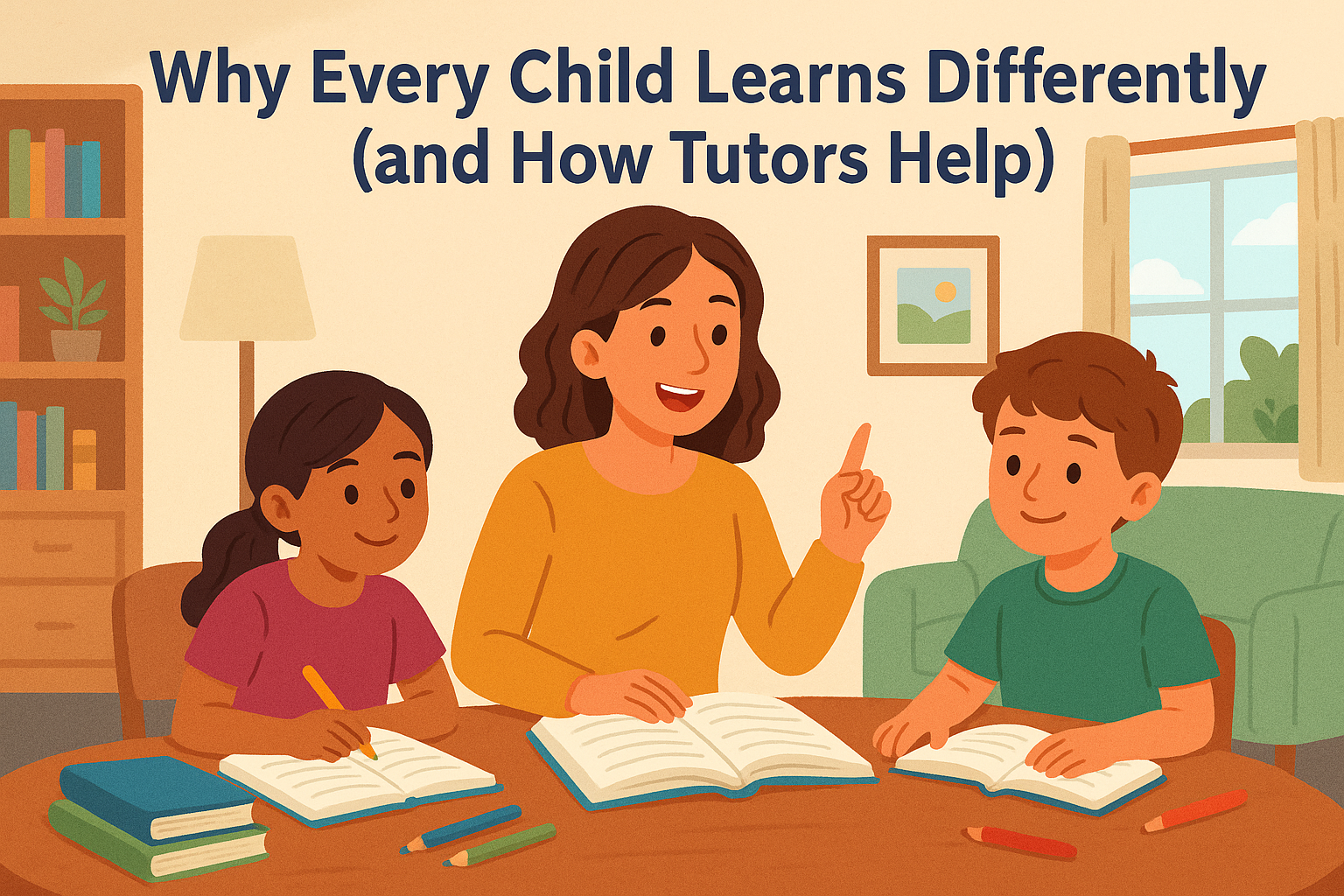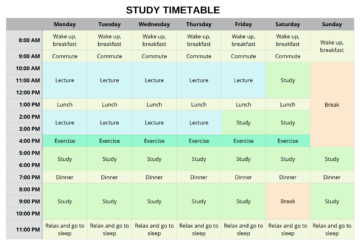Have you ever noticed that two children sitting in the same classroom can learn in completely different ways? One child may love solving math problems quickly, while another prefers reading stories or drawing pictures to understand the same idea. This is because every child is unique, and so is the way they learn.
In schools, teachers try their best to teach a large group of students at the same time. But not every child can learn at the same speed or in the same style. That is why home tuition plays a very important role. A personal tutor can understand a child’s way of learning and then adjust the teaching style accordingly.
In this blog, we will explore:
- Why children learn differently
- Different learning styles in kids
- The challenges children face in group learning
- How tutors help children learn in their own way
- Tips for parents to support their child’s learning
Why Do Children Learn Differently?
There are many reasons why children don’t all learn in the same way:
- Personality – Some children are very active and curious, while others are quiet and prefer listening.
- Interests – A child who loves music may remember things better through songs, while another who loves sports may enjoy learning through games.
- Speed of Learning – Some kids grasp new ideas quickly, while others need more time and practice.
- Environment – A child’s home, school, and even the kind of support they receive affect how they learn.
- Confidence Level – Children who believe in themselves often learn faster than those who feel shy or scared to ask questions.
Just like no two fingerprints are the same, no two learning styles are the same either.
Different Learning Styles in Children
Experts have found that children usually learn in a few common ways. Let’s understand them in simple language:
- Visual Learners (Learning by Seeing)
- They understand better when they see pictures, charts, or diagrams.
- Example: A child may learn fractions better by looking at a pizza divided into slices.
- Auditory Learners (Learning by Hearing)
- These kids learn best when they listen to explanations, songs, or discussions.
- Example: A child remembers multiplication tables faster if they are sung like a rhyme.
- Kinesthetic Learners (Learning by Doing)
- They prefer hands-on activities, experiments, or moving around while learning.
- Example: A child may understand measurements better by actually using a ruler or pouring water into cups.
- Reading/Writing Learners
- They love reading books and writing notes to understand concepts.
- Example: A child may revise lessons better by making notes or practicing with worksheets.
Most children are a mix of these learning styles, but usually one style works best for them.
Challenges Children Face in Group Learning
In classrooms or coaching centers, there are usually 20–40 students together. This can create some problems:
- The teacher cannot focus on every child individually.
- Children who learn slower may feel left behind.
- Some kids feel shy to ask questions in front of everyone.
- Fast learners may get bored if lessons are too slow.
- Different learning styles are not always considered.
This is where home tutors make a big difference.
How Tutors Help Children Learn in Their Own Way
A personal tutor does not just “teach” — they understand the child first. Here are some ways tutors help:
- Personal Attention
- Tutors focus only on one child, so they can understand the child’s strengths and weaknesses.
- Customized Teaching
- If a child is a visual learner, tutors use pictures and charts.
- If a child is an auditory learner, tutors explain with stories and discussions.
- Boosting Confidence
- Many children hesitate to ask questions in class. A tutor creates a safe space where the child feels free to ask anything.
- Flexible Pace
- Tutors adjust the speed of teaching according to the child. Slow learners get more time, while quick learners get challenging tasks.
- Making Studies Fun
- Tutors often use games, quizzes, and activities so that children enjoy learning instead of feeling stressed.
- Focus on Doubt Clearing
- One of the biggest benefits of home tuition is that doubts are cleared instantly, so the child never feels left behind.
- Improving Exam Performance
- Tutors give regular tests, practice papers, and feedback that help children perform better in exams without stress.
Real-Life Example
Imagine two children, Riya and Aarav.
- Riya loves drawing and finds math difficult. A tutor teaches her fractions by drawing shapes and coloring them. Suddenly, math doesn’t feel so hard!
- Aarav loves stories but struggles with history. His tutor explains history lessons as exciting stories with characters. Aarav begins to enjoy history and remembers dates more easily.
This shows how personalized tutoring works like magic.
Tips for Parents
Parents also play an important role in supporting their child’s unique learning style. Here are some tips:
- Observe your child – notice what they enjoy while studying.
- Create a calm and comfortable study space at home.
- Encourage your child to ask questions freely.
- Appreciate their small achievements to boost confidence.
- Work together with the tutor to track progress.
Final Thoughts
Every child is different, and so is their way of learning. While schools provide a strong foundation, not every child can shine in a group setting. Home tuition bridges this gap by focusing on each child’s personal learning style.
With the right tutor, children not only improve their studies but also grow in confidence, creativity, and problem-solving skills.
At HomeScholars, we believe that every child is unique and deserves to learn in a way that suits them best. Our tutors are trained to adapt their methods so your child can enjoy learning and achieve success.
Because at the end of the day — when a child learns happily, they learn better.




